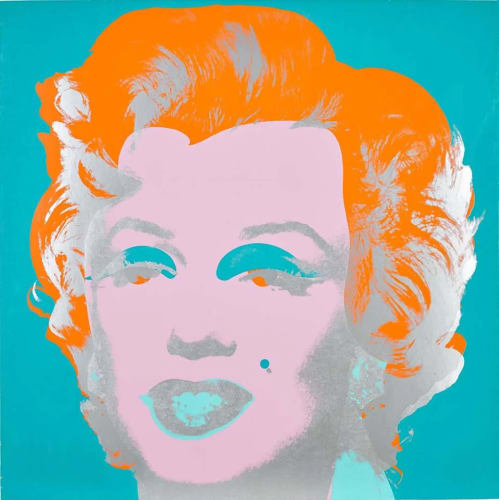Since his death in 1987, Andy Warhol remains one of the most influential figures in contemporary art, and his print market is among the most robust and liquid within the contemporary art segment. Known for iconic imagery such as Marilyn Monroe, Campbell’s Soup Cans, and Mao, Warhol’s prints are accessible entry points into blue-chip collecting and continue to show strong performance at auction and in private sales in 2025.
Market Performance
1. Steady Growth in Demand
Warhol’s print market has seen consistent demand over the past decade, with particular growth from 2019 onward. The 2022 and 2023 seasons were particularly strong, as Warhol’s work gained renewed visibility through major exhibitions, pop culture references, and Netflix’s The Andy Warhol Diaries.

2. Auction Highlights
-
Marilyn Portfolio continue to command robusy figures often, for matched sets, achieving sales figures of 4m USD +.
-
Mick Jagger portfolio has seen increased interest, with individual prints fetching $80,000–$120,000 depending on condition and signature.
-
Complete portfolios, such as Endangered Species or Ten Portraits of Jews of the Twentieth Century, are commanding significant premiums, especially when accompanied by original documentation or housed in custom frames.
3. Liquid Market & Wide Appeal
Unlike many blue-chip artists, Warhol’s editions range from ultra-rare to relatively affordable (under $50,000), offering flexibility to collectors and investors alike. This liquidity makes his prints an attractive investment vehicle.

Why Warhol is a Strong Investment
1. Cultural Relevance
Warhol’s themes—celebrity, consumerism, mortality—remain ever-relevant, ensuring his work continues to resonate with both established collectors and new audiences globally.
2. Brand Power
Warhol is more than an artist—he’s a brand. His name is synonymous with Pop Art and American culture. This brand equity contributes to lasting market value and resilience even during economic downturns.
3. Museum-Backed Legacy
Institutions such as The Museum of Modern Art (MoMA), the Whitney, and the Andy Warhol Museum in Pittsburgh actively preserve and promote Warhol’s legacy, reinforcing long-term interest and scholarly value.
4. Accessibility + Scarcity
Warhol produced prints in editions ranging from 10 to 250, offering a spectrum of availability while maintaining a sense of scarcity. Signed, authenticated works with COAs from the Andy Warhol Foundation carry significant weight in the secondary market.
5. Portfolio Diversification
Warhol’s prints act as a “blue-chip hedge” within art portfolios. Their pricing is less volatile than emerging artists and historically outperforms inflation over the long term.

Andy Warhol’s print market continues to thrive, supported by a global collector base, institutional validation, and consistent demand. For both seasoned collectors and first-time investors, Warhol offers cultural cachet, financial promise, and enduring aesthetic value. As with any investment, due diligence, condition, provenance, and authenticity are key—but in the world of contemporary art, Warhol remains a cornerstone. Explore Andy Warhol original prints for sale and contact info@guyhepner.com for latest availabilities. Looking to sell? We can help! Find out how to sell Andy Warhol prints with our New York and London galleries.

